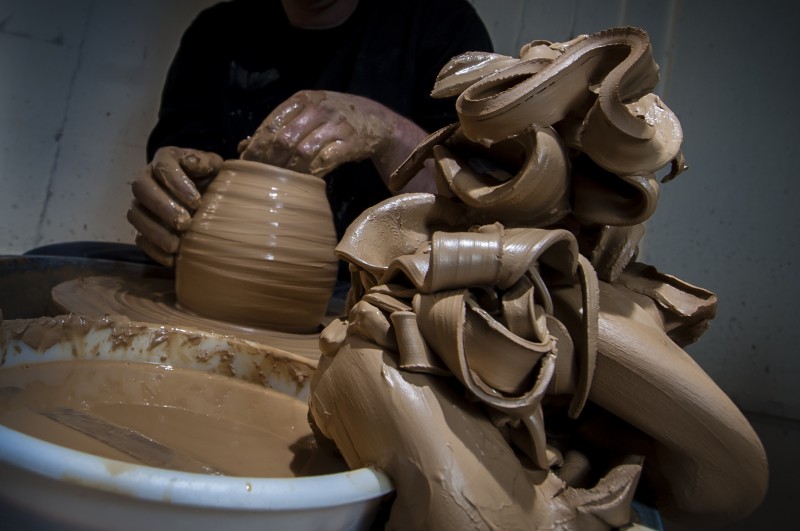
Handmade pottery and ceramics are timeless art forms that have been cherished by civilizations throughout history. Crafting your pottery and ceramics allows you to express your creativity, make unique pieces, and connect with the rich traditions of craftsmanship. In this article, we will guide you through the process of creating your handmade pottery and ceramics, step by step, from choosing the right clay to mastering various techniques and finishing touches.
Understanding Handmade Pottery and Ceramics
History of Pottery and Ceramics
The history of pottery and ceramics dates back thousands of years, with evidence of ancient civilizations like the Egyptians, Greeks, and Chinese producing exquisite pottery pieces. The craft has evolved over time, blending traditional techniques with modern influences.
The Importance of Handmade Craftsmanship
Handmade pottery and ceramics hold a special place in the hearts of art enthusiasts and collectors. The imperfections and individuality of handmade pieces add a unique charm that mass-produced items cannot replicate.
Choosing the Right Clay and Tools
Types of Clay for Pottery
Selecting the right clay is crucial for successful pottery making. Different clays offer varying textures and properties suitable for specific projects. Common clay types include earthenware, stoneware, and porcelain.
Essential Tools for Pottery Making
Equipping yourself with essential pottery tools is the first step towards creating stunning ceramics. Basic tools like a pottery wheel, clay cutters, and shaping tools are indispensable for both beginners and experienced potters.
Hand-Building Techniques
Hand-building is a versatile approach that allows artists to create pottery without a wheel. Three popular hand-building techniques are:
Pinch Pot Method
The pinch pot technique involves shaping the clay by pinching it with your fingers. This method is ideal for creating small bowls and decorative items.
Coil Building
Coil building involves rolling clay into long coils and stacking them to form the desired shape. This technique is excellent for making vases and larger vessels.
Slab Construction
Slab construction utilizes flat, rolled-out clay slabs to construct boxes, tiles, and other flat-surfaced pottery.
Wheel-Throwing Techniques
Preparing the Clay
Before wheel-throwing, prepare the clay by wedging it to remove air bubbles and ensure uniform consistency.
Centering the Clay on the Wheel
Centering the clay on the wheel is a fundamental skill that ensures the clay spins symmetrically, making it easier to shape.
Creating Basic Forms
Master basic forms like cylinders and bowls before moving on to more complex shapes. Practice and patience are key to perfecting wheel-throwing techniques.
Adding Decorative Elements
Carving and Incising
Carving and incising allow you to create intricate designs and patterns on the clay surface.
Slip Trailing and Sgraffito
Slip trailing involves using liquid clay to draw designs, while sgraffito is a technique where you scratch the surface to reveal underlying layers.
Glazing Techniques
Glazing adds color and a glossy finish to your pottery. Experiment with different glazing techniques to achieve desired effects.
Firing the Pottery
Kiln Types and Firing Process
Firing pottery involves heating it in a kiln to a high temperature to harden the clay permanently. Kilns come in various types, such as electric and gas kilns.
Bisque Firing vs. Glaze Firing
Bisque firing is the first firing, which hardens the clay but leaves it porous. Glaze firing follows, applying the glaze and firing it again to achieve a finished look.
Finishing and Assembling Ceramics
Sanding and Smoothing the Surfaces
After firing, sand and smooth rough edges for a polished appearance.
Attaching Handles and Other Components
For ceramics, attach handles and other components using clay slip or glaze.
Caring for Handmade Pottery and Ceramics
Cleaning and Maintenance
Handmade pottery requires gentle cleaning and regular maintenance to preserve its beauty and durability.
Display and Storage Tips
Display your pottery in well-lit areas and use appropriate storage to protect delicate pieces.
Embracing Creativity and Experimentation
Trying New Forms and Shapes
Expand your skills by experimenting with new shapes and forms, pushing the boundaries of your creativity.
Incorporating Colors and Patterns
Experiment with colors, patterns, and surface treatments to create visually captivating pieces.
Selling Handmade Pottery and Ceramics
Creating an Online Presence
Build an online platform or utilize e-commerce websites to showcase and sell your handmade creations.
Participating in Craft Fairs and Markets
Participate in craft fairs and local markets to reach a broader audience and interact with potential customers.
The Joy of Handmade Pottery and Ceramics
Connecting with the Artistic Process
Creating handmade pottery and ceramics allows you to form a deep connection with the artistic process and the materials used.
Appreciating the Beauty of Craftsmanship
As you immerse yourself in the art of pottery making, you will gain a profound appreciation for the craftsmanship involved in creating each unique piece. Handmade pottery and ceramics are not just functional items but works of art that carry the spirit of the artist within them. By following this guide, you can embark on a rewarding journey of creativity and self-expression through pottery making. Embrace the imperfections, experiment with various techniques, and savor the joy of seeing your ideas take shape in clay.
Information Access: A World without the Internet
When to Begin Preparing for a Job Interview?
Amazon Freedom Sale to soon uplift in August with great Proffers this year